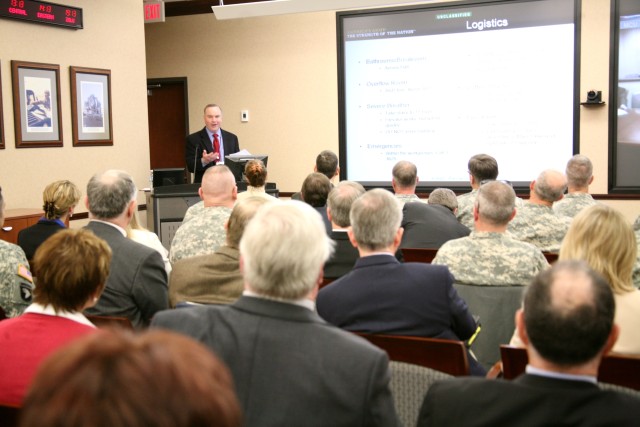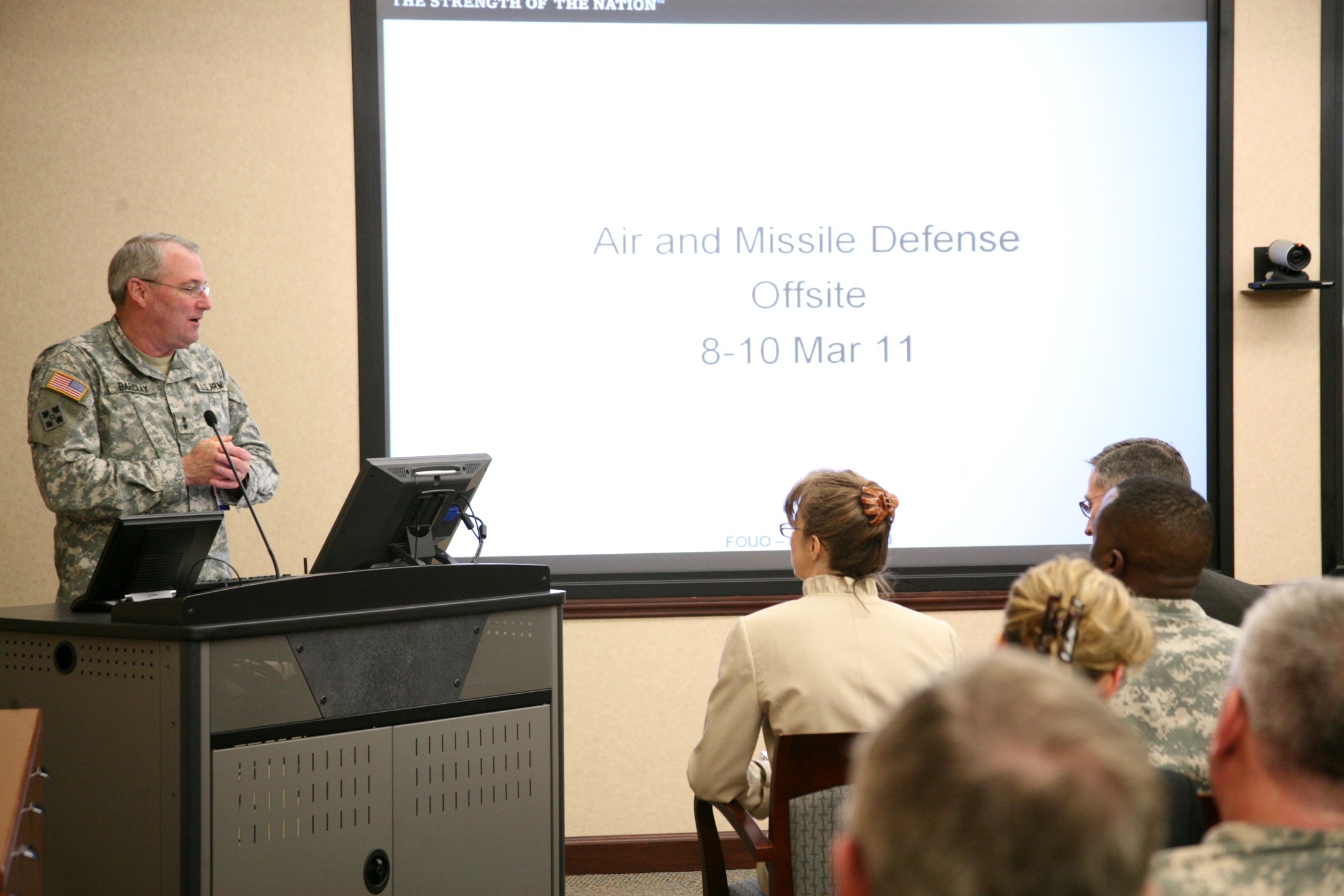REDSTONE ARSENAL, Ala. -- The U.S. Army's newest task force, Air and Missile Defense Task Force, conducted an offsite for key Air and Missile Defense Enterprise stakeholders March 8-10 at the U.S. Army Space and Missile Defense Command/Army Forces Strategic Command headquarters on Redstone Arsenal, Ala.
Lt. Gen. Richard P. Formica, USASMDC/ARSTRAT commanding general, hosted the offsite. Before assuming command, Formica was responsible for standing up the task force and served as its first acting director.
The offsite began with a general officer luncheon, and it was followed by an opening session with briefings and comments by Formica; Maj. Gen. James Barclay, deputy G-3, Department of the Army headquarters; Maj. Gen. David Halverson, commander, Fires Center of Excellence; Maj. Gen. Thomas Spoehr, director, Force Development, HQDA G-8; Maj. Gen. Robert Brown, deputy for Acquisition and Systems Management for the assistant secretary of the Army (Acquisition, Logistics, Technology); and Dr. David Markowitz, Capabilities Integration Directorate, HQDA G-3/5/7.
Following the opening session, presentations on AMD capability portfolio review, enterprise governance, electronic attack, and prioritized capabilities were provided as a means to flesh out issues and guide discussions over the next day and a half. TEAM REDSTONE members entrenched within these groups were from the Army Material Command; Program Executive Office-Missiles and Space; Army Material Research, Development, and Evaluation Command; Missile and Space Intelligence Center; and USASMDC/ARSTRAT.
The AMD Capability Portfolio Review 2010 was discussed not only to address the status of decisions directed as a result of the review, but to capture the second and third order effects of those decisions on the AMD portfolio. Of primary concern from CPR discussions was the importance of developing a common Continuity of Operations and common threat picture to be used as the basis for developing an integrated air and missile defense strategy for AMD CPR 2011. AMD stakeholders also built the IAMD Enterprise Management Framework to identify, delineate and refine roles and responsibilities across the community.
The electronic attack work group identified two significant issues: first, Joint Land Attack Cruise Missile Defense Elevated Netted Sensor needs to be briefed to the Joint Requirements Oversight Council in 60-75 days to gain approval and continue the current test plan; and, second, there is no Army lead for electronic attacks against AMD systems. The lack of an Army lead exacerbates issues of Army funding, priorities, capabilities and vulnerabilities. Initial efforts were to identify the appropriate Army lead and to develop a path forward to complete a clear assessment of this evolving threat.
Finally the Army's input to the U.S. Strategic Command's prioritized capabilities list to influence Program Objective Memorandum 2014 was discussed. While the community agreed to the prioritized list, it was suggested that the top priority should be to ensure funding of the existing IAMD baseline to ensure that emerging priorities do not nullify existing priorities.
The offsite concluded with each lead briefing his top issues. These top issues will be worked for the next few months as the AMD Enterprise establishes a strategy to meet the nation's needs. Issues that are not solved will be presented at an AMD Integration and Synchronization Conference projected for June 2011.




Social Sharing